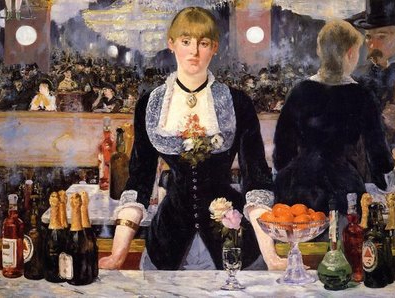For reasons of cash and scholarship this is an era of well-travelled masterpieces.
AT FIRST sight the calendar on the wall of Jim Moyes' office looks like a holiday planner. Until, that is, you read the names of those who will be coming and going. Hogarth is off to Venice in mid-August; in October Velasquez makes a flying visit to New York, where he will briefly overlap with Canaletto; later in the year, Frans Hals is going to Washington. This is Moyes' job chart; he runs Momart, Britain's largest company of art shippers, handlers and storers. Business is evidently thriving. Art, now more than ever, is on the move.
We live in an age of great exhibitions. The twentieth century, with its successive transport revolutions, has become the era of the travelling masterpiece. Take Manet's A Bar at the Folies- Bergere, in the Cour-tauld Galleries. Give the painting a passport, and the salient details would read something like this. Born 1882, Paris. Travelled to: Antwerp 1882; Paris 1900; London 1905; St Petersburg 1912; Frankfurt, Vienna, Dresden and Cologne, 1912-14; Lausanne 1926; London 1926 (bought by Samuel Courtauld; given British citizenship); Paris 1932; Paris 1955; Paris, New York, 1983; Tokyo, Kyoto, Osaka 1984; Canberra 1984; Ohio, New York, Texas, Chicago and Kansas 1988. Manet's great depiction of the Parisian demi-monde is also the Lindbergh of paintings; according to museum folklore, it was the first work of art to cross the Atlantic by air. At a rough estimate, A Bar at the Folies-Bergere has at least 56,000 miles on the clock.
The modern blockbuster exhibition has put more miles on the average old or modern master painting than any other post-war development in the art world. In the 1980s, a period of vigorous art historical revi-sionism, paintings are constantly being...

Movements in Modern Art
25-07-1989

